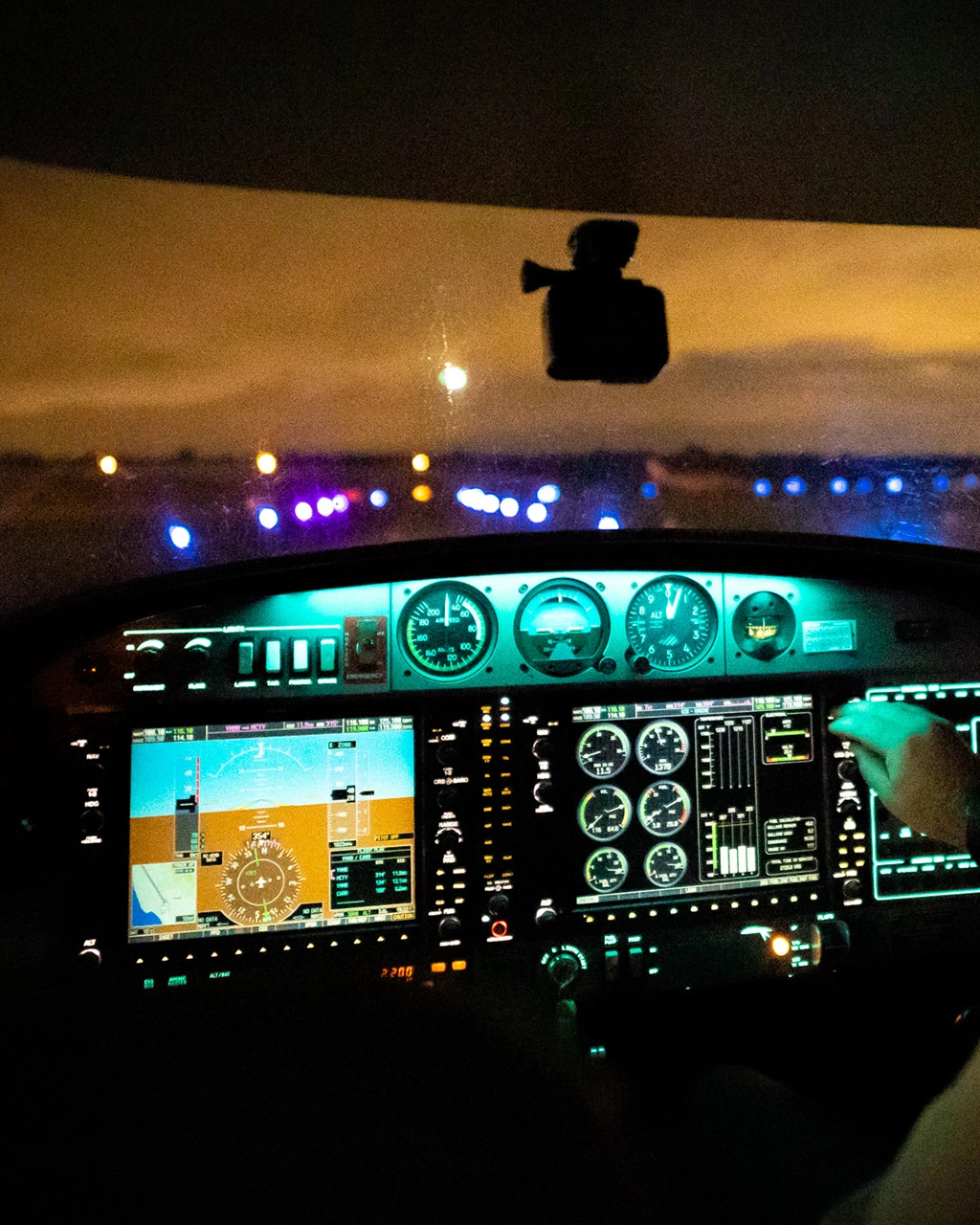
January 30, 2023
Night VFR Rating: Learn How To Fly At Night
Flying at night is one of the most challenging aspects of aviation. It can be intimidating and even terrifying, but it doesn’t have to be. If you know what to expect and how to prepare, flying at night can be a beautiful experience.
A pilot’s skill set would be significantly enhanced by the addition of night flying. You can take to the skies at night if you have your Night VFR rating with your pilot licence.
Night VFR training is an excellent way for pilots to get comfortable with night flying and be able to do so safely. When travelling across the country, you won’t have to worry about being constrained by time thanks to this training.
When you’re learning how to fly at night, there are some things that you need to know about flying at night that will help you understand what’s going on.
This blog will guide you on what you need to know about night flying and some tips for preparing yourself and your aircraft. This knowledge will help you feel confident in your ability to fly safely at night!
Night VFR Rating
Night flying is one of the most challenging skills a pilot can learn. It requires a combination of skill, knowledge, and experience that can only be acquired over time.
Learning the ins and outs of night visual flight regulations and requirements, human factors, weather, and atypical night operations from an accredited aviation school is essential for safe night flights. Learn to Fly helps students learn the basics of night flying, flight planning, and navigation in the Night Rating course.
A VFR (visual flight rules) rating permits you to fly as the pilot-in-command after sunset. After completing the VFR night rating, you can fly in Australia at night. Many students move to this level after acquiring their private pilot licence.
Travelling at night provides greater freedom when planning long journeys that may not be finished during daylight. Flying at night is also often more pleasant since there is less air traffic.
An additional perk is increasing your nighttime experience. Night flying is a major deterrent for many airline pilots looking to further their careers. The industry standard for airlines is 100 hours. We recommend getting your night rating if you want to make a living as a pilot.
Flying at night takes more concentration than flying during the day, so it’s important to be well-rested before you fly. You should also be familiar with your aircraft’s instruments and systems and have practised reading them under all lighting conditions.
If you’re interested in adding a Night VFR rating, read on to find out a brief rundown of things you should be aware of.
Nighttime Flying: What You Need to Know
The CASA requires you to have a valid medical certificate before flying. A private and commercial pilot certificate only allows you to fly during the day. You’ll need an instrument and a VFR rating to fly at night.
If you’re a pilot, nighttime flying can be one of the most thrilling experiences in your life. Flying at night is a challenge for novice and experienced pilots because of the many obstacles that must be overcome before taking off into the dark sky.
The best time to fly is when the weather is good. Unfortunately, that’s not always possible. If you have to fly at night, here are some tips and tricks you’ll need to know:
Check Your Weather Forecast
The most important thing to do when planning a nighttime flight is to check the weather forecast. Make sure you know how far in advance you need to check the forecast so that you can plan accordingly. You also want to make sure that there are no storms or other dangerous conditions predicted.
Plan your route carefully
Make sure there’s no chance of losing sight of landmarks along your route, such as lakes or rivers. Also, ensure that the area isn’t too flat — it’s easier for pilots to lose orientation when flying over flat ground than over hilly terrain.
Get to know some nighttime flying illusions
Illusions of flight at night are widespread and potentially lethal if not addressed promptly. Master the art of recognising and overcoming how your senses might mislead you when the lights go out.
Don’t forget to bring extra lights
If you plan on flying at night, make sure to have a flashlight (or two), a headlamp, and batteries. You shouldn’t skimp on pre-flight and post-flight inspections just because it’s late. Use red light if possible; it will aid your eyes in adjusting to the dark and provide the clearest visibility.
Record nighttime
Night flying is like any other ability; the more you do it, the better you get at it. To keep your CASA certification relevant, you must regularly log nighttime. To remain current and legally transport people at night in general aviation, pilots must have completed at least three nighttime takeoffs and three full-stop nighttime landings during the preceding ninety days.
Make a strategy to prevent pilot burnout
Pilots are more likely to become exhausted at night than during the day, all else being equal. Once the sun goes down, our circadian rhythms kick in, and we begin to feel sleepy. Combating pilot weariness and staying attentive requires planning.
Takeaway
Nighttime flying is a great way to expand your horizons and challenge yourself. But it’s important to know what you’re getting into to make the most of your experience and stay safe.
The Night VFR Rating is a great way to improve your skills in low-visibility conditions, and it’s something that can help you advance your career as a pilot.
At Learn to Fly, you can choose from Night VFR Rating, Night VFR Training Endorsement and Private Pilot Training, as well as several other courses, including commercial pilot training and flight instructor rating.
So what are you waiting for? Sign up now!








